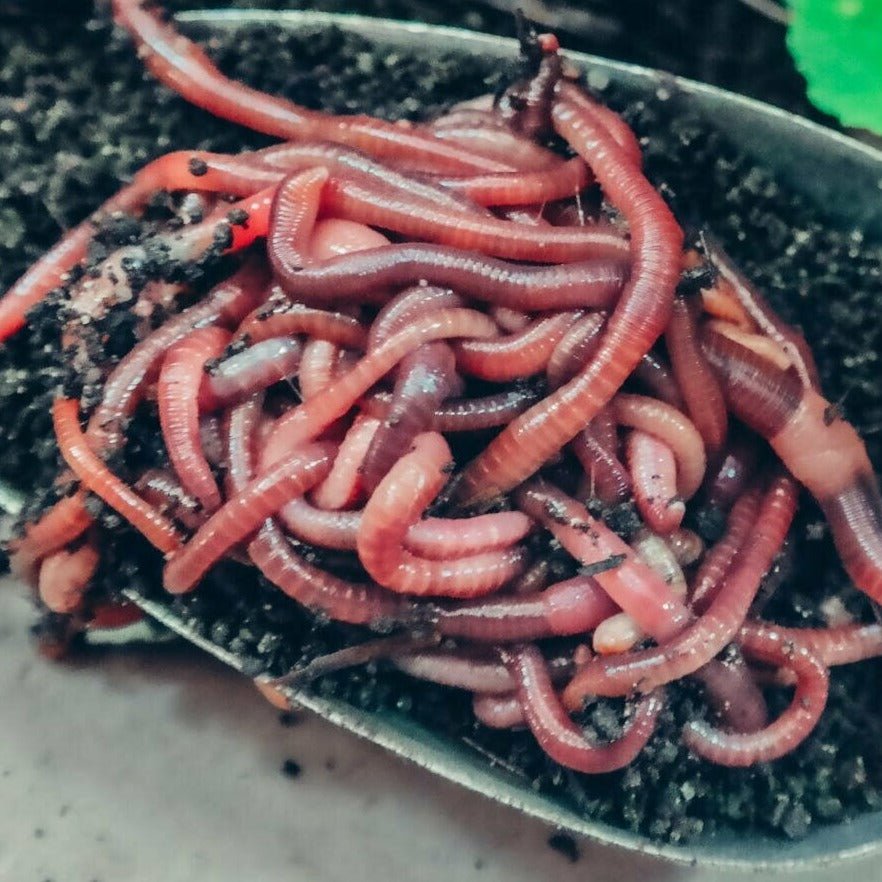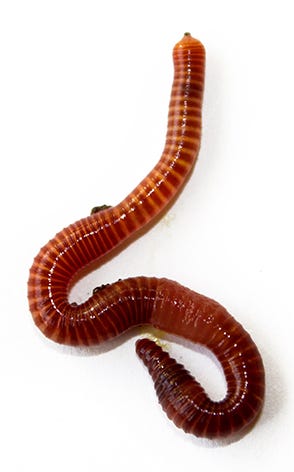Organic Composting with Red Wiggler Worms - Boost Your Garden's Development
Organic Composting with Red Wiggler Worms - Boost Your Garden's Development
Blog Article
Optimizing the Perks of Red Wiggler Worms: A Comprehensive Guidebook for Home Gardeners and Urban Farmers
In the realm of lasting gardening practices, red wiggler worms stand as unhonored heroes, quietly transforming natural waste right into nutrient-rich castings that can function marvels for dirt health and wellness. As home garden enthusiasts and city farmers increasingly look for environmentally pleasant and cost-effective ways to boost their gardens, the possible benefits of taking advantage of the power of red wigglers can not be overstated. From decreasing kitchen area waste to growing healthier plants, the application of these simple creatures supplies a myriad of advantages. By exploring the intricacies of just how to efficiently care for and optimize the benefits of red wiggler worms, people can open a wealth of chances for enhancing the sustainability and productivity of their gardening endeavors.
Recognizing Red Wiggler Worms
Red Wiggler worms, renowned for their effective composting capacities, are a varieties of earthworms widely used in vermiculture techniques. These worms, scientifically called Eisenia fetida, flourish in decomposing natural material, making them optimal prospects for composting (Red Wiggler Worms). Red Wigglers are ravenous eaters, with the ability of consuming their own weight in natural waste daily. Their digestive process breaks down organic matter into nutrient-rich spreadings, which are a beneficial source for enriching dirt and advertising plant development.
One key characteristic of Red Wiggler worms is their reproductive rate. These hermaphroditic animals have both female and male reproductive organs, permitting them to reproduce rapidly under favorable conditions. A mature Red Wiggler can create multiple offspring in a brief duration, making certain a constant populace within a composting system.

Establishing a Worm Container
When developing a worm container for vermiculture purposes, correct preparation and attention to detail are necessary for producing a helpful setting for Red Wiggler worms. Begin by selecting an appropriate container for your worm container. This can be a plastic or wood container with a cover to maintain dampness levels and protect the worms from light. Make sure that the bin has drainage openings near the bottom to stop waterlogging.

Place the worm container in an amazing, dark location away from direct sunlight and extreme temperature levels. By following these steps, you can set up a flourishing worm container that will successfully process natural waste right into nutrient-rich vermicompost for your yard.
Feeding and Preserving Worms
Ensuring a balanced and healthy diet regimen is critical for the health and productivity of Red Wiggler worms in a vermiculture system. It is essential to prevent feeding them citrus fruits, onions, garlic, dairy products, meat, and oily foods as these can be damaging to the worms or trigger unpleasant odors in the bin.
Proper moisture degrees are also essential for the wellness of Red Wiggler worms. By diligently monitoring their diet, wetness, and ecological problems, home gardeners and city farmers can sustain a healthy and productive Red Wiggler worm population for composting objectives.
Gathering Worm Spreadings
To pop over to this web-site efficiently extract nutrient-rich worm spreadings from the vermicompost, an organized harvesting process is necessary for taking full advantage of the composting benefits. The initial action in collecting worm spreadings is to urge the worms to migrate to one side of the bin.
After the castings have actually been collected, it is necessary to divide any kind of continuing to be worms from the castings to prevent hurting them throughout storage or application. One effective method is to create cone-shaped piles of spreadings under brilliant light. Worms will intuitively move far from the light, permitting very easy splitting up and removal.
Finally, the collected worm spreadings ought to be saved in a great, dark, and dry area to preserve their quality and efficiency as a nutrient-rich dirt modification. By following these actions, home gardeners and metropolitan farmers can take full advantage of the advantages of red wiggler worms in their vermicomposting systems.
Using Worm Castings in Horticulture
The consolidation of nutrient-rich worm spreadings right into garden dirt can significantly boost plant growth and total soil health and wellness. Worm castings, also referred to as vermicast, are a natural fertilizer generated by red wiggler worms as they damage down raw material. These spreadings are abundant in crucial nutrients like nitrogen, phosphorus, potassium, and helpful microorganisms that promote plant development and boost soil structure.
When making use of worm castings in gardening, it is vital to mix them completely into the soil or use them as a leading clothing around plants. The slow-release nature of worm spreadings guarantees a stable supply of nutrients to plants gradually, lowering the threat of nutrient leaching and advertising lasting dirt fertility. Furthermore, worm spreadings aid boost dirt aeration, water retention, and microbial task, developing a healthy and balanced setting for plant roots to grow.

Verdict
In verdict, the use of go to these guys red wiggler worms in home gardening and city farming can substantially benefit soil health and wellness and plant growth. By comprehending how to establish up and preserve a worm container, feed the worms properly, and harvest their nutrient-rich castings, gardeners can make the most of the advantages of these earthworms.
In the realm of sustainable gardening techniques, red wiggler worms stand as unrecognized heroes, official site quietly changing organic waste right into nutrient-rich spreadings that can work wonders for soil wellness.When developing a worm bin for vermiculture purposes, appropriate preparation and attention to information are necessary for creating a favorable environment for Red Wiggler worms. The initial step in gathering worm castings is to encourage the worms to migrate to one side of the container. Worm spreadings, also known as vermicast, are a natural fertilizer produced by red wiggler worms as they damage down organic issue. By recognizing exactly how to set up and preserve a worm bin, feed the worms correctly, and harvest their nutrient-rich spreadings, garden enthusiasts can make best use of the advantages of these earthworms.
Report this page